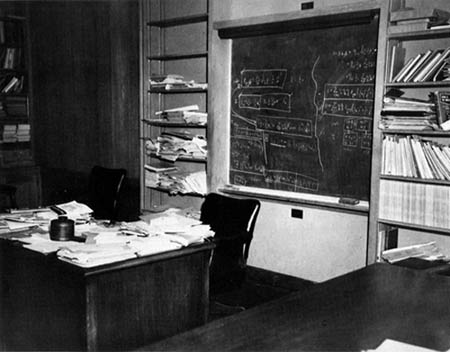Contributions to Physics

"If the facts don't fit the theory, change the facts."
During Einstein’s employment at the Patent Office, he did the majority of his life’s works in his spare time. In 1905, Einstein published three important articles—each on a different topic.
The first dealt with electromagnetism, especially focusing on the contributions Max Planck had made. “Einstein used Planck’s quantum hypothesis to describe visible electromagnetic radiation, or light” (http://www.humboldt1.com/~gralsto/einstein/1905.html). Einstein’s theory formed the basis for a large part of quantum mechanics.
The second paper of 1905 discussed the special theory of relativity. “Einstein realized that the equations describing the motion of an electron in fact could describe the nonaccelerated motion of any particle or any suitably defined rigid body” (ibid). He reinterpreted the classic principle of relativity and said that the laws of physics had to have the same form in any frame of reference. A second important hypothesis Einstein made was to assume that the speed of light remained constant in all frames of reference, which Maxwellian theory required. Einstein was not the first person to propose a connection between mass and energy either; he contributed more in unifying classical mechanics and Maxwellian electrodynamics.
The third of Einstein’s 1905 papers dealt with statistical mechanics, a field that both Ludwig Boltzmann and Josiah Willard Gibbs had elaborated on also. Einstein was unaware of Gibb’s contributions and extended Boltzmann’s work to calculate the average trajectory of a microscopic particle encountering random collisions with other molecules in a liquid or gas. Einstein’s paper provided evidence for the much-discussed theory of atom-sized molecules.
After 1905, Einstein continued to work on all of these topics, but he increasingly seemed to focus on the special theory of relativity, and attempts to extend it to “phenomena involving acceleration” (ibid). “In 1907 he proposed that if mass were equivalent to energy, then the principle of equivalence required that gravitational mass would interact with the apart mass of electromagnetic radiation, which includes light. By 1911, Einstein was able to make preliminary predictions about how a ray of light from a distant star, passing near the Sun, would appear to be attracted, or bent slightly, in the direction of the Sun’s mass.” (ibid).
About 1912, Einstein began work on his general theory of relativity, obtained from Herman Minkowski’s 1907 mathematical elaboration of Einstein’s special theory of relativity. He published his definitive form of the theory in late 1915. This theory has been verified numerous times in the past sixty years.